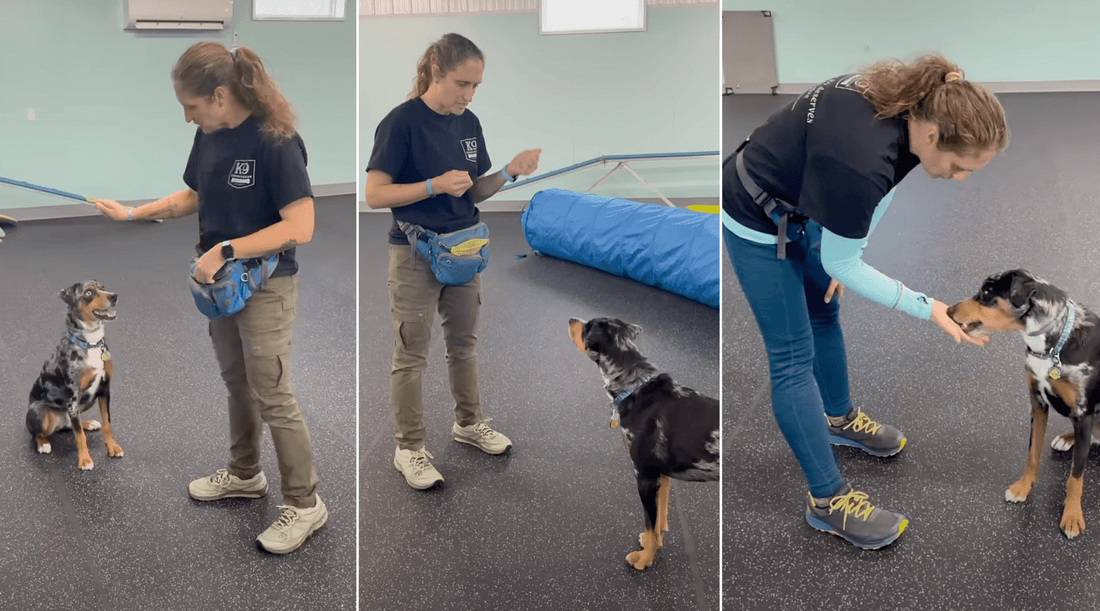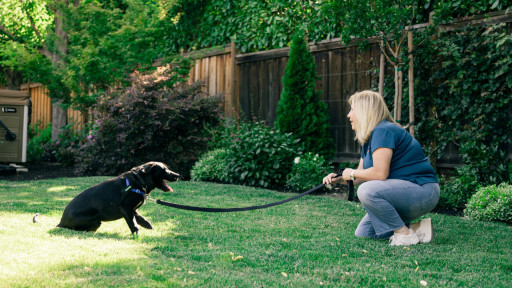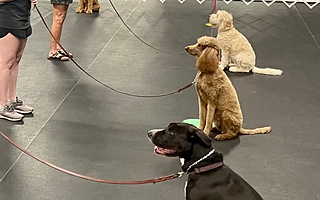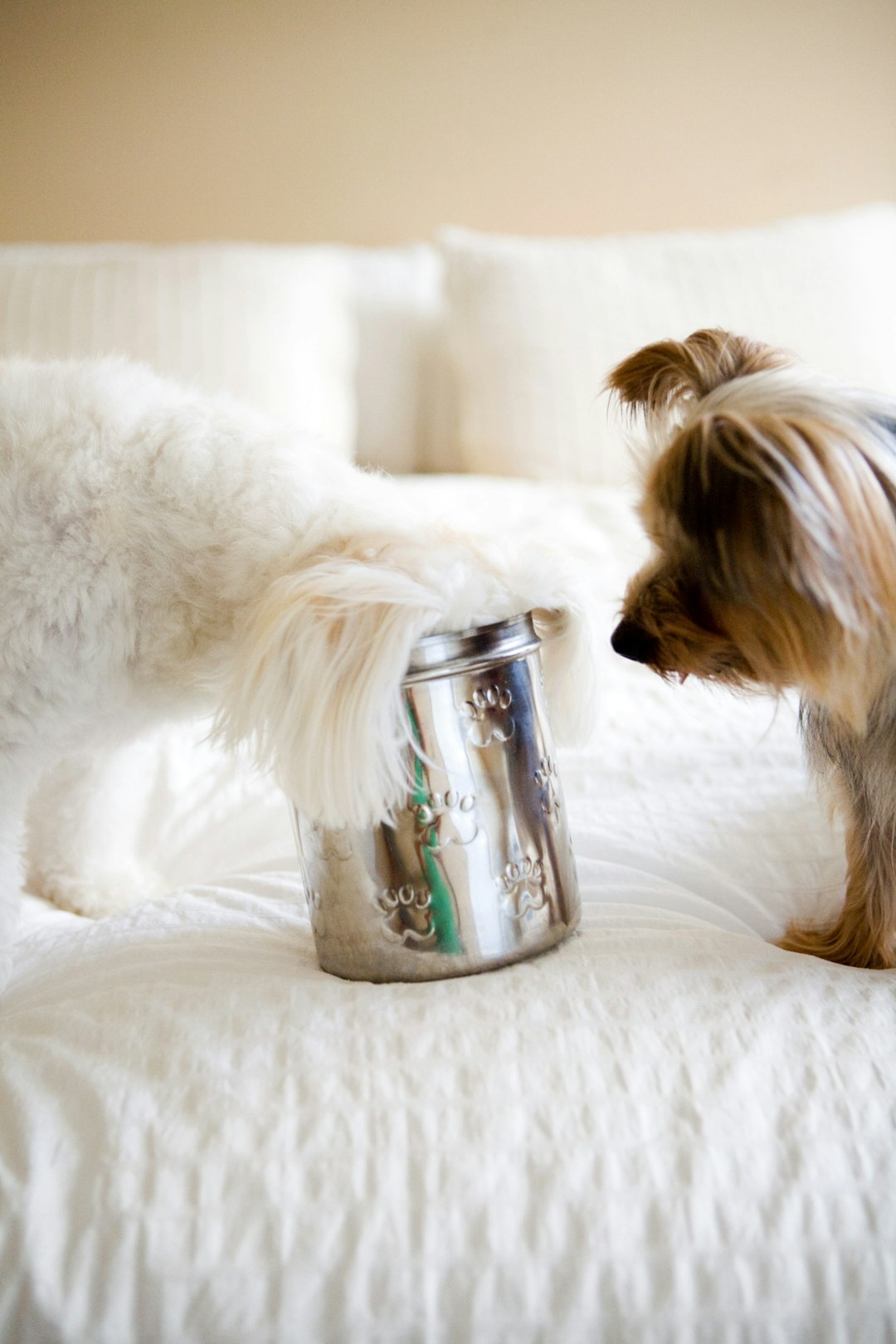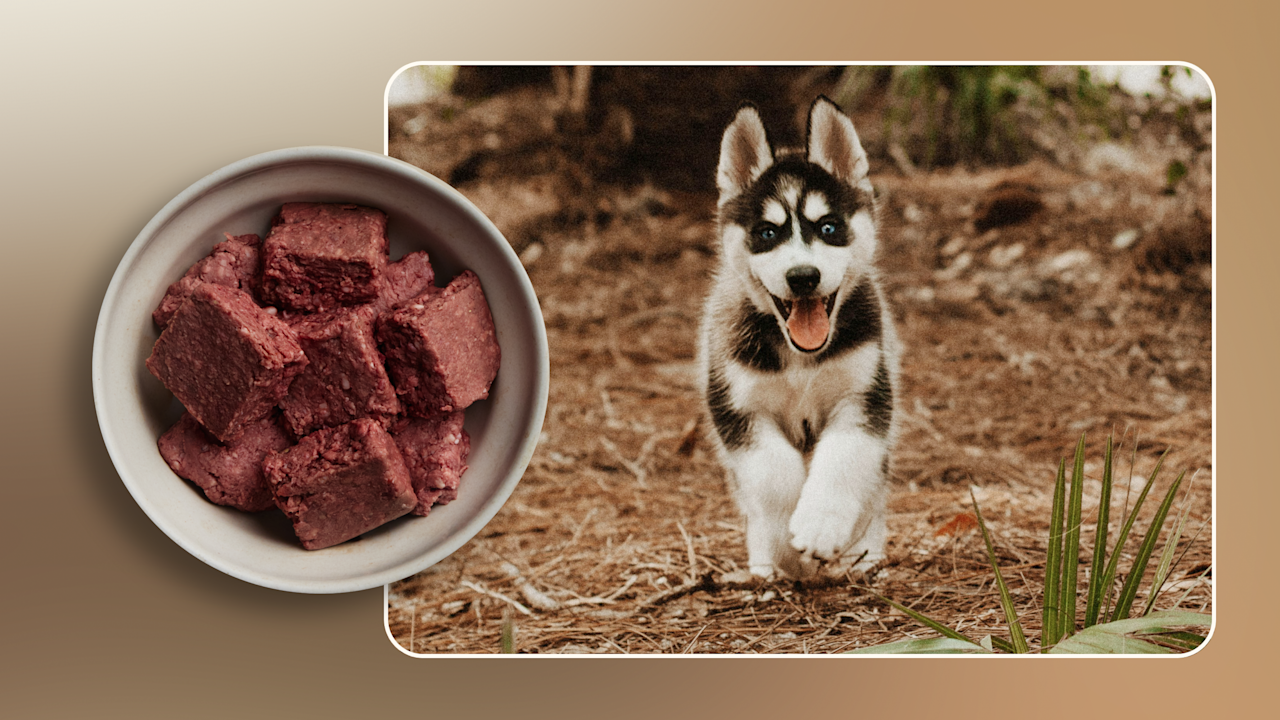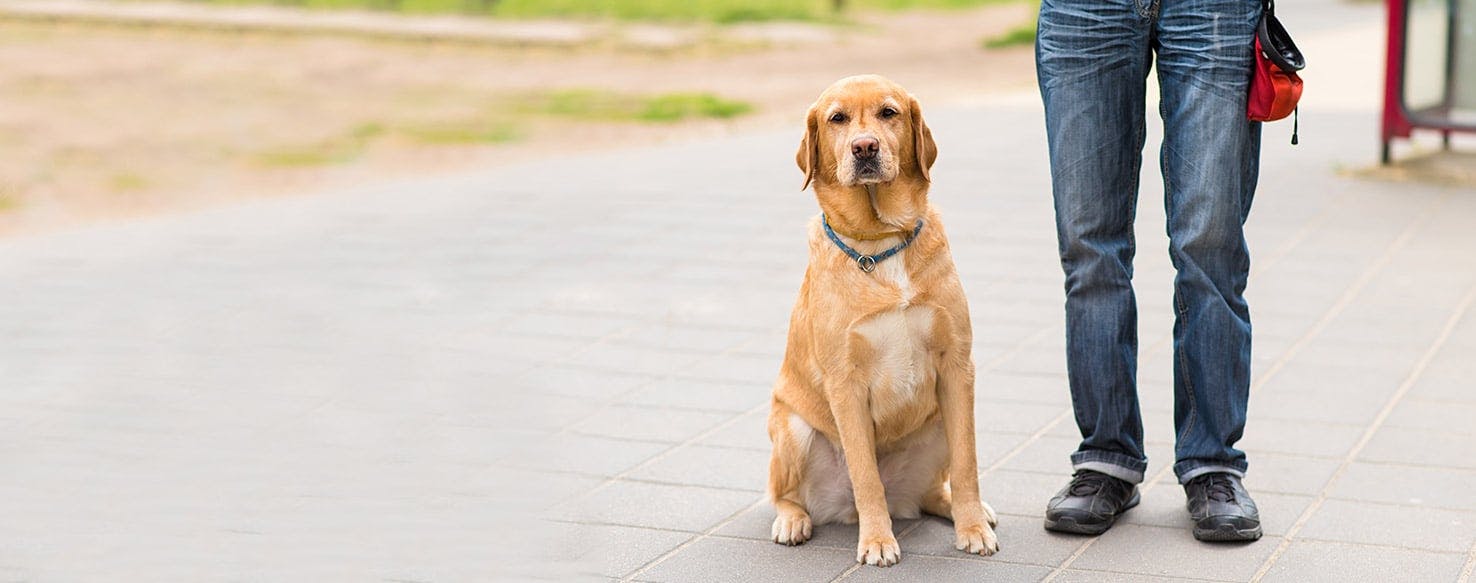Training an older dog might seem challenging, but it’s completely possible—and rewarding. You might think your dog is too set in their ways, but with the right approach, you can teach them new tricks and improve their behavior.
Imagine having a well-behaved companion who listens to you and enjoys learning at any age. You’ll discover simple, effective techniques to help your older dog become obedient and happy. Keep reading to unlock the secrets that make training easier and more enjoyable for both of you.
Benefits Of Training Older Dogs
Training an older dog can bring surprising benefits that go beyond just obedience. It improves their quality of life and strengthens your bond. You might think older dogs can’t learn new tricks, but they often respond well to consistent, patient training.
Improves Mental Stimulation And Reduces Anxiety
Older dogs can get bored or anxious, especially if they spend a lot of time alone. Training provides mental challenges that keep their brains active and engaged.
For example, teaching your dog new commands or tricks can slow down cognitive decline and ease stress. Have you noticed your dog seeming restless or confused? Training can help calm that.
Enhances Physical Health And Mobility
Training sessions often include light exercises that help maintain your dog’s muscle tone and joint flexibility. Even simple commands like “sit” and “stay” encourage movement and balance.
Regular activity through training can reduce stiffness and improve circulation. This can make daily activities easier and more enjoyable for your dog.
Strengthens Your Relationship
Training creates a clear way for you and your dog to communicate. It builds trust and respect, which is especially important for older dogs who may be set in their ways.
When you train your dog, you show them that you care about their well-being. This often leads to a happier, more confident pet who feels secure in your presence.
Helps Manage Behavioral Issues
Older dogs might develop habits like excessive barking or jumping that can be frustrating. Training helps you address these behaviors in a positive way.
By setting consistent boundaries, you make life smoother for both you and your dog. Have you faced challenges with your dog’s behavior? Training offers practical solutions.
Assessing Your Dog’s Current Skills
Before you start teaching your older dog new commands, it’s important to understand what skills they already have. Assessing your dog’s current abilities helps you set realistic goals and tailor your training to their needs. This step saves you time and reduces frustration for both you and your dog.
Observe Basic Commands
Take note of the commands your dog already knows, like sit, stay, or come. Are they responding consistently, or only sometimes? Understanding this helps you decide if you need to reinforce basics or move on to new skills.
Try giving a command in a calm environment and then in a more distracting one. Does your dog obey in both situations? This shows how strong their training really is.
Evaluate Physical Abilities
Older dogs may have physical limitations affecting their training. Check if your dog has trouble standing, walking, or following hand signals. Adjust your expectations based on their health and mobility.
For example, a dog with arthritis might struggle to sit on command quickly. Knowing this allows you to modify commands or use treats to encourage gentle movements.
Assess Attention Span And Motivation
Notice how long your dog stays focused during training sessions. Older dogs might have shorter attention spans or different motivations than younger ones. Use treats, toys, or praise that your dog finds most rewarding.
Have you noticed what excites your dog the most? Use this to keep their interest high and make training sessions enjoyable for both of you.
Check For Behavioral Issues
Identify any behaviors that could interfere with training, such as fear, anxiety, or stubbornness. Older dogs can develop habits that need gentle correction before new commands can be taught effectively.
Understanding your dog’s emotional state helps you approach training with patience and empathy, creating a better learning environment.
Creating A Positive Training Environment
Creating a positive training environment is key to teaching an older dog obedience. A calm, friendly space helps your dog focus and feel safe. Older dogs may take more time to adjust, so patience matters. The right setting boosts learning and makes training fun for both of you.
Choosing The Right Location
Select a quiet place with few distractions. Avoid noisy areas or places with many people. A familiar spot helps your dog relax. Outdoors can work if it is calm and safe. Keep the area clean and free from hazards. Comfort is important. Use soft surfaces like grass or carpet to protect your dog’s joints.
Gathering Essential Tools
Use simple, gentle tools to support training. A soft leash and a comfortable collar are good choices. Have tasty treats ready to reward good behavior. Small, soft treats work best for older dogs. Keep toys handy for motivation and breaks. Use a clicker only if your dog responds well to it. Avoid tools that cause fear or pain. The goal is to encourage and guide gently.
Credit: www.tiktok.com
Basic Commands For Older Dogs
Training an older dog requires patience and clear communication. Basic commands help your dog understand what you expect. They also build trust and improve your bond. Start with simple commands that your dog can easily learn and remember.
Basic commands give your dog structure and security. Older dogs can learn new skills with consistent practice. Use gentle tones and rewards to encourage good behavior. Keep training sessions short to maintain your dog’s focus.
Sit And Stay
The “Sit” command is a fundamental skill for all dogs. It teaches your dog to pause and listen. To train “Sit,” hold a treat close to your dog’s nose. Slowly move the treat above their head. When the dog sits, say “Sit” and give the treat immediately.
“Stay” helps your dog remain in place until you release them. Start with short stays and gradually increase time. Use a calm voice to say “Stay” while holding your palm out. Reward your dog for staying still. This command improves safety and control in different situations.
Come And Heel
The “Come” command is essential for recall. Call your dog’s name and say “Come” clearly. Use a happy, inviting voice. When your dog approaches, reward with praise or a treat. Practice in a quiet space before trying it outside.
“Heel” teaches your dog to walk beside you calmly. Use a leash and start walking slowly. Say “Heel” and keep treats at your side. Reward your dog for staying close and not pulling. This command makes walks safer and more enjoyable.
Advanced Commands For Enhanced Obedience
Advanced commands can take your older dog’s obedience to the next level. They build on basic training and help your dog respond reliably in more challenging situations. These commands also keep your dog mentally sharp and strengthen your communication.
Leave It And Drop It
Teaching your dog to “Leave It” and “Drop It” is essential for safety and control. These commands prevent your dog from picking up harmful or unwanted objects. Start by showing a treat in your closed hand and saying “Leave It.” When your dog stops trying and looks away, reward them with a different treat.
For “Drop It,” offer a toy or object, then gently hold a treat near their nose while saying the command. When they release the item, give the treat immediately. Practice these commands regularly in different settings to ensure your dog listens even when distractions increase.
Training Off-leash
Training your dog off-leash requires a solid foundation of obedience and trust. Begin in a secure, enclosed area before gradually increasing distance and distractions. Use a long leash or training line at first to maintain control while encouraging your dog to respond to your voice from afar.
Keep sessions short but consistent, always rewarding your dog for returning or following commands without the leash. How confident do you feel your dog is ready to roam free? Off-leash training not only boosts obedience but also enhances your dog’s freedom safely.

Credit: www.amazon.com
Overcoming Common Challenges
Training an older dog comes with unique challenges that can test your patience and creativity. These challenges often stem from habits deeply rooted over years or emotional barriers like anxiety. Understanding how to handle these issues will make your training sessions more effective and enjoyable for both you and your dog.
Dealing With Stubborn Behavior
Older dogs can be set in their ways, making stubbornness a common hurdle. Instead of pushing harder, try changing your approach. Use high-value treats or favorite toys as rewards to catch their attention.
Keep training sessions short and fun to prevent frustration on both sides. Sometimes, stubbornness hides a lack of motivation or understanding. Ask yourself if your dog clearly knows what you want or if your cues need to be clearer.
Consistency is key. Repeat commands calmly and avoid raising your voice, which might cause resistance. Have you noticed particular times or environments when your dog resists more? Adjust your training to those moments for better results.
Addressing Anxiety And Fear
Older dogs often carry anxiety from past experiences or new changes in their environment. Patience is essential when your dog shows fear or nervousness during training.
Start with a quiet, familiar space where your dog feels safe. Use gentle praise and avoid forcing your dog into situations that trigger anxiety. Gradually introduce new challenges, allowing your dog to build confidence at their own pace.
Recognize the signs of stress like trembling, yawning, or avoiding eye contact. If anxiety seems severe, consult your vet for advice or consider calming aids. What small steps can you take today to make your dog feel more secure during training?
Consistency And Patience In Training
Training an older dog requires a steady approach. Consistency and patience form the core of effective training. These qualities help your dog learn and adapt without feeling stressed. Older dogs may take longer to grasp new commands. Repetition and calm guidance build trust and understanding.
Practicing the same routines daily helps your dog remember rules. Patience allows you to stay calm through slow progress. Avoid rushing or showing frustration. Celebrate small successes to keep motivation high. This gentle approach creates a positive learning environment.
Creating A Regular Training Schedule
Choose specific times each day for training sessions. Consistent timing helps your dog expect and prepare for learning. Keep sessions short, about 10-15 minutes, to maintain focus. Regular practice reinforces commands and behaviors.
Using Clear And Simple Commands
Speak in a calm, steady voice. Use the same words for each command every time. Avoid changing commands or using too many words. Simplicity helps your dog understand what you want.
Rewarding Progress To Encourage Learning
Give treats or praise immediately after good behavior. Positive reinforcement makes your dog want to repeat the action. Reward even small steps to build confidence. This approach strengthens your dog’s desire to learn.
Managing Setbacks With Calm Persistence
Older dogs may forget or resist commands sometimes. Stay patient and repeat lessons calmly. Avoid punishment or harsh tones. Consistent kindness helps your dog feel safe and willing to try again.

Credit: www.monsterk9.com
Incorporating Fun And Engagement
Training an older dog can be a joyful experience with the right approach. Incorporating fun and engagement keeps your dog interested and motivated. It helps reduce stress and builds positive associations with learning. Playful activities bring energy and excitement to your training sessions. This approach makes obedience training feel like a game rather than a chore.
Using Games And Rewards
Games make learning new commands easier for older dogs. Simple games like fetch or hide-and-seek sharpen their focus. Rewards such as treats or praise encourage good behavior. Use small, tasty treats to keep your dog eager and attentive. Switch between different games to maintain excitement and prevent boredom.
- Play “find the treat” to boost scent skills.
- Use tug toys to reward quick responses.
- Combine sit or stay commands with short play sessions.
Rewards reinforce what your dog learns and make training fun.
Building A Strong Bond
A strong bond improves obedience in older dogs. Spend quiet time together to build trust and comfort. Gentle petting and soft talking create a calm atmosphere. Consistent training sessions show your dog you care. Praise often to build confidence and reduce anxiety.
- Maintain eye contact during training for connection.
- Use a calm voice to guide and reassure your dog.
- Celebrate small successes with affection and treats.
Bonding boosts your dog’s willingness to learn and obey.
Monitoring Progress And Adjusting Techniques
Monitoring your older dog’s progress during obedience training is essential. It helps you see what works and what doesn’t, so you can adjust your techniques to fit your dog’s unique needs. Regular check-ins make sure your efforts lead to real improvements.
Tracking Behavioral Changes Over Time
Keep a simple journal or use an app to note your dog’s behavior after each training session. Record what commands your dog responds well to and where they struggle.
Look for small signs of improvement, like longer attention spans or fewer distractions. These subtle changes often mean your dog is understanding better, even if the progress feels slow.
Adapting Training Based On Your Dog’s Energy And Mood
Older dogs have varying energy levels and moods. Pay close attention to these daily changes and adjust your training length and intensity accordingly.
If your dog seems tired or uninterested, try shorter, more frequent sessions instead of long ones. This keeps training enjoyable and prevents frustration for both of you.
Using Rewards That Motivate Your Dog
Not all rewards work the same for every dog, especially seniors with changing tastes or health issues. Experiment with different treats, toys, or praise to find what truly excites your dog.
Switch up rewards if your dog loses interest. Sometimes a new favorite treat or a special playtime can renew their enthusiasm for training.
Seeking Feedback From Others
Ask family members or friends who interact with your dog to share their observations. They might notice improvements or challenges you miss.
This outside perspective can guide you in tweaking your approach or confirming you’re on the right track. It also helps keep training consistent across different environments.
Frequently Asked Questions
How Long Does Training An Older Dog Take?
Training duration varies by dog’s age and temperament. Generally, older dogs learn commands within weeks. Consistency, patience, and positive reinforcement speed up progress. Short, regular sessions work best. Progress depends on previous training and the dog’s motivation.
Can Older Dogs Learn New Commands Effectively?
Yes, older dogs can learn new commands effectively. They may take more time but respond well to gentle, consistent training. Using treats and praise boosts motivation. Mental stimulation helps maintain their cognitive health. Age is not a barrier to obedience training.
What Methods Work Best For Training Older Dogs?
Positive reinforcement is best for training older dogs. Use treats, praise, and gentle corrections to encourage good behavior. Avoid harsh methods that cause stress. Short, frequent sessions keep dogs engaged. Tailor training to the dog’s physical and mental abilities.
How To Handle Stubborn Behavior In Older Dogs?
Handle stubborn behavior with patience and calmness. Identify triggers and avoid punishment. Reward desired actions immediately. Increase mental stimulation and physical exercise. Consistent routines and clear commands reduce confusion. Professional help can be beneficial if challenges persist.
Conclusion
Training an older dog takes patience and kindness. Start with small steps and keep sessions short. Praise your dog often to build good habits. Consistency helps your dog learn faster every day. Remember, age is not a barrier to learning.
Enjoy the process and build a stronger bond. Your older dog can become well-behaved and happy. Keep practicing, and you will see great results. Training brings joy to both you and your dog.

